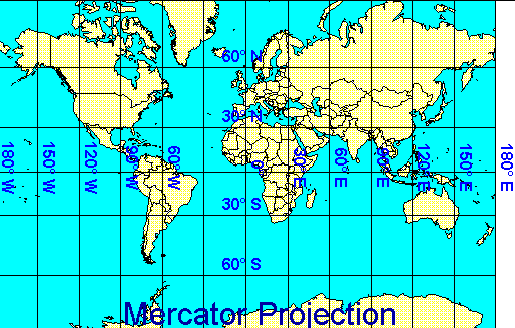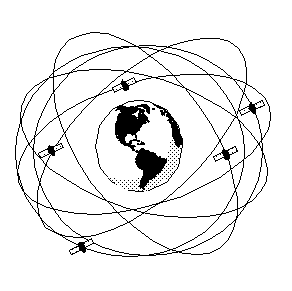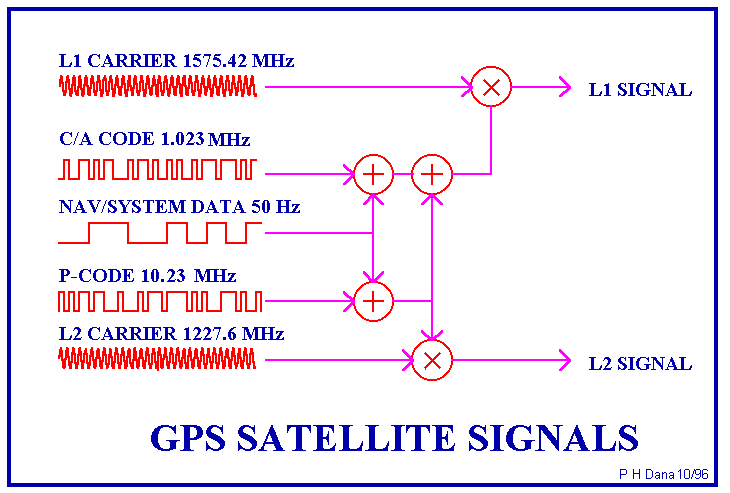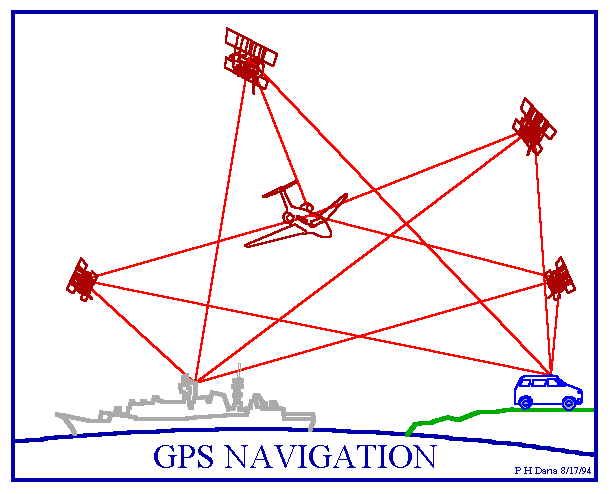 | Map Producer Identification:
The agency which produced the map is identified in the top left-hand
corner of the map sheet. |
 | Map Sheet Name: The
sheet name is found in two places; the top right-hand corner and the lower
right-hand corner of the map sheet. A map sheet is named after the
most prominent man-made or natural physical feature depicted on that
sheet. Also found here is the area of the earth's surface portrayed
on the map. For example, if a map sheet is a 7.5 minute series or
quadrangle, then it covers 7.5 minutes of latitude and longitude.
This can also be determined by observing the latitude and longitude
coordinates of the four corners of the map. |
 | Map Specific Legend:
This legend depicts features specific to this map sheet and is located in
the lower right-hand corner. |
 | The State Locator:
Graphically depicts the location of the map in respect to a state's
boundaries and can be found in the lower right-hand side of the map. |
 | Scale: The scale of the
map is found in the bottom center of a map sheet. The scale gives
the ratio of map distance to the corresponding distance on the earth's
surface. |
 | Graphic Bar Scales:
Found at the bottom center of the map sheet, these rulers are used to
convert map distances to ground distances and to convert distances between
different units of measure. |
 | Contour Interval:
Also found at the bottom
center of the map sheet below the graphic bar scales. These show the
vertical distance between contour lines on the map and the unit of measure
used. |
 | Declination Diagram:
Sometimes referred to as the G-M, (grid-magnetic angle) is found in the
lower margin of the map sheet to the left of the graphic bar scales.
The declination diagram is the angular difference between true north and
either magnetic or grid north, for the particular portion of the earth's
surface depicted on the map. Declination diagrams are seldom plotted
exactly to scale. The relative position of the directions is
obtained from the diagram, but the numerical value of the declination
should never be measured from the angles. Use the written value of
the declination provided to the left and right of the diagram. |
 | Datum Information:
Found below the contour
interval note and contains information that can be used with a GPS unit. |
 | Map Information Note:
Contains information about the production of the map and can be found in
the lower left-hand corner of the map sheet. |
 | Index To Adjoining Sheets
Diagram: Found in the lower right-hand portion of the map sheet and
depicts the location of the map sheet you are using in respect to
adjoining sheets. |
Mercator Map
The shortest distance between two
points is a straight line, but on the surface of a globe the shortest
distance is an arc known as a great circle. If you were to plot the
route of a great circle on most maps, it would not appear to be a direct
route. This is due to the distortion caused by projecting the curved
surface of the globe onto a flat surface. Perhaps the most widely used
map is the Mercator Cylindrical Projection. The Mercator map is
very useful for navigation because a straight line on the map corresponds to
a compass heading. If you look carefully at the map below, both
parallels and meridians are straight lines and cross at right angles.
The meridians are equally spaced, but parallels are not. This is
because the Mercator projection is constructed by straightening the lines of
longitude and by increasing the space between latitude equal to the space of
longitudinal widening. This projection is most accurate within 15
degrees of the equator. Distortion is so severe near the pole that the
northern and southern limits of the map are fixed at the 84th parallel.
The Mercator projection has given many people a distorted perception of the
size of the continents. Greenland, for example, appears larger than
South America when actually Greenland is only one eighth of the size of
South America.

Because lines of
longitude merge at the poles, the distance represented by one degree of
longitude is greatest at the equator and decreases as latitude increases.
For example, at the equator a degree of longitude is about 111 kilometers
(or 69 miles), while at 60 degrees latitude, a degree of longitude is only
about 56 kilometers (or 35 miles.) At the poles, the meridians intersect, so
a degree of longitude is zero kilometers (that's because there are no
degrees of longitude at the poles.) Nevertheless, we can easily determine
the distance between two places on the globe even if their latitude is not
the same.
Global
Positioning Systems (GPS)
GPS was developed by the U.S.
Department of Defense as a system that would provide global, all-weather, 24
hour positioning capability. GPS is now also used in civil
applications mostly for navigation and mapping.
Presently, 24 GPS satellites orbit
the earth at a distance of about 20,000 km. Four satellites are in
each of six different orbital planes. This arrangement insures that at
least four and as many as eight satellites are visible above the horizon
from any spot on Earth.

Onboard each
satellite are atomic clocks that keep precise time. Each satellite
broadcasts its location and time information as a code on two microwave
carrier signals (L1 frequency of 1575.42 MHz and L2 frequency of 1227.60
MHz).

The basis of GPS
positioning is that your location can be determined if you know the distance
to four (4) different satellites. This technique is called
triangulating or ranging. The GPS receiver measures the distance to
the satellites using the travel time of a coded radio signal and the speed
of light. Because your handheld GPS unit does not contain an atomic
clock to precisely measure time differences, it contains a directory (called
an almanac) of the projected position of each of the satellites in the
orbital planes. The GPS receiver uses this information to calculate
the time differences and thus the distance to each satellite.

In order for GPS to work, the
antenna at the end of the GPS unit needs to receive the signals from the
orbiting satellites. Therefore, you need to be outside with a view of
the sky. Mountains, trees, buildings and other obstacles can block the
satellite signals or cause the signals to bounce around creating positioning
inaccuracies. When you turn on the GPS unit, it will take some time
for enough information from the satellite to be processed before your
position is "fixed" or known. The military uses an encrypted code on
the L2 frequency to obtain ±5m accuracy on handheld GPS receivers. The
signal code carried by the L1 frequency used by civil GPS units is randomly
degraded and scrabbled (called selective availability, or SA.)
Therefore, a position determined by the handheld civil GPS units is
approximately ±100 m.
Map Projections
& Types
A map projection is the systematic
arrangement of a planet's parallels and meridians onto a plane surface.
These meridians and parallels become the projection graticule. The
graticule takes on different forms depending on the type of projection plane
surface; the point or line of tangency; the aspect; and direction of an
imaginary projection light source. The projection process also
involves the transformation of land features such as coastlines and land
boundaries.
All map projections have some type
of distortion or deformation. Depending on the projection properties,
the distortion may be of area; shape; size; distance; direction; or scale.
No projection is free from all distortions, but each contains only some
distortion. The cartographer or mapmaker must select a projection
which will result in a minimum of distortion in relation to the map theme or
purpose; the amount of land area shown; and the portion of the
planet's surface being represented on the map. As previously noted,
all map projections contain some types of distortion. Some projections
preserve shape and direction while distorting area. Others maintain
area but distort shape and scale. In many projections scale may vary
from place to place and in all projections distortion will increase away
from the places of tangency. The types of distortions are a function
of the way the projection is constructed. As most projections have
been derived mathematically, the type of distortion is often a function of
certain mathematical relationships specific to a given projection.
Map projections are grouped into
three families: Cylindrical, Conic and Azimuthal, with Pseudocylindrical
projections forming a variation on the Cylindrical Family. These
families are based on the configuration of the plane onto which the globe
(sphere) is projected.
In addition to map projections,
there are an endless variety of types of maps. Below are just a few of
the types available.
![]()
![]()